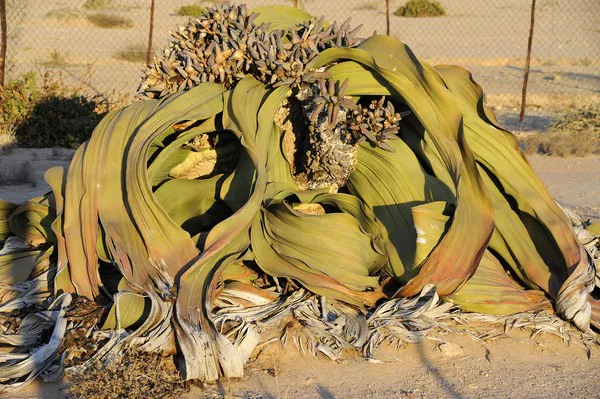In the vast realm of flora, nature unfolds a tapestry of fascinating plants that captivate the imagination and contribute to the ecological diversity of our planet. From the intricate adaptations of carnivorous plants to the storied histories of ancient trees, this article embarks on a journey to explore the 10 most interesting plants. These botanical marvels showcase the ingenuity of plant life, serving as a testament to the diversity and resilience of the natural world.
10 Most Interesting Plants in the World
1. Venus Flytrap (Dionaea muscipula):
At the top of our list stands the Venus Flytrap, a carnivorous plant renowned for its unique method of capturing prey. Native to the wetlands of the Carolinas in the United States, this plant features hinged leaves with trigger-sensitive bristles. When an unsuspecting insect triggers these bristles, the leaves snap shut, trapping and digesting the prey. The Venus Flytrap’s carnivorous adaptation serves as both a defense mechanism and a source of nutrients in nutrient-poor soils.
2. Titan Arum (Amorphophallus titanum):
Dubbed the “corpse flower” for its pungent odor resembling that of a decomposing animal, the Titan Arum holds the title of the world’s largest unbranched inflorescence. Native to the rainforests of Sumatra, this gigantic flower can reach heights of up to 10 feet (3 meters). The foul smell, reminiscent of rotting flesh, attracts carrion beetles and flesh flies, serving as a clever strategy for pollination. The Titan Arum’s rare and infrequent bloom makes it a botanical spectacle, drawing crowds to witness its unusual beauty.
3. Welwitschia mirabilis:
Hailing from the arid deserts of Namibia, Welwitschia mirabilis is a peculiar plant that captures attention with its unique appearance. Resembling a cluster of broad, strap-like leaves emerging from a central base, Welwitschia is known for its longevity, with some specimens living for over a thousand years. The plant relies on fog for moisture and has adapted to withstand harsh desert conditions, making it a true survivor in one of the world’s most inhospitable environments.
4. Baobab Tree (Adansonia):
Found in various regions of Africa, Australia, and the Middle East, the Baobab tree is a botanical giant renowned for its distinctive silhouette. With its swollen trunk and branches resembling roots, the Baobab stands as an iconic symbol of the African savanna. Some Baobab trees can live for thousands of years, and their massive trunks store water during the dry season. The Baobab’s fruit, known as “monkey bread,” is not only nutritious but also plays a crucial role in the ecology and cultural practices of the regions where it thrives.
5. Corpse Lily (Rafflesia arnoldii):
Known for producing the largest individual flower in the world, the Corpse Lily is a parasitic plant found in the rainforests of Southeast Asia. The flowers of Rafflesia arnoldii can reach diameters of up to three feet (one meter) and emit a foul odor, similar to that of the Titan Arum, to attract carrion flies for pollination. The rare and elusive blooming of the Corpse Lily adds an air of mystery to this fascinating plant, making it a subject of intrigue for botanists and nature enthusiasts alike.
6. Mimosa Pudica (Sensitive Plant):
The Mimosa pudica, also known as the sensitive plant or touch-me-not, exhibits a captivating response to touch. Native to Central and South America, this small, creeping plant has compound leaves that fold inward when touched or exposed to heat. The rapid leaf movements are a result of changes in water pressure within specialized cells, a defense mechanism to deter herbivores. Mimosa pudica’s unique sensitivity has made it a favorite among plant enthusiasts and an intriguing subject for scientific study.
7. Dragon’s Blood Tree (Dracaena cinnabari):
Endemic to the Socotra archipelago in the Indian Ocean, the Dragon’s Blood Tree is a botanical marvel with a distinctive umbrella-like canopy and an otherworldly appearance. The tree gets its name from the crimson sap it produces, known as “dragon’s blood,” which has been used for various purposes, including traditional medicine and dye. The unique shape of the Dragon’s Blood Tree is an adaptation to the arid and windy conditions of its native habitat, showcasing nature’s ability to create remarkable forms for survival.
8. Pitcher Plant (Nepenthes):
Carnivorous plants never fail to capture the imagination, and the Pitcher Plant, belonging to the genus Nepenthes, is no exception. Found in diverse habitats, from tropical rainforests to high-altitude mountains, these plants have evolved modified leaves that form pitcher-shaped structures. The pitcher contains a fluid that attracts, traps, and digests insects. The unique adaptations of Pitcher Plants showcase the diversity of carnivorous strategies in the plant kingdom, allowing them to thrive in nutrient-poor soils.
9. Welwitchia (Tumboa mirabilis):
Native to the Namib Desert, Welwitschia is a fascinating and bizarre plant that captures attention with its unique appearance. While it may look like a leafy shrub, Welwitschia actually has only two leaves, which continue to grow throughout the plant’s life and can become incredibly long and twisted. The plant’s adaptation to the harsh desert environment includes absorbing moisture from coastal fog, making it a true survivor in one of the world’s oldest deserts.
10. Corpse Flower (Amorphophallus titanum):
Distinct from the Titan Arum, the Corpse Flower is another captivating member of the Amorphophallus genus. Native to the rainforests of Sumatra, this giant flower is known for its putrid smell, which attracts pollinators such as carrion beetles. Despite its off-putting odor, the Corpse Flower’s immense size and infrequent blooming make it a popular attraction in botanical gardens around the world. Its botanical spectacle and unique reproductive strategy contribute to its status as one of the most interesting plants.
See Also:10 SMELLIEST FLOWERS IN THE WORLD
Conclusion:
As we explore the world of plants, from carnivorous wonders to ancient survivors, it becomes evident that the plant kingdom is teeming with diversity, adaptability, and extraordinary features. Each of the 10 plants discussed in this article offers a glimpse into the fascinating realm of botany, highlighting the ingenuity of nature in creating forms and adaptations that serve various ecological roles. Whether capturing prey, thriving in extreme environments, or captivating human curiosity, these botanical marvels contribute to the rich tapestry of life on Earth. As we continue to unravel the mysteries of the plant kingdom, these 10 most interesting plants stand as testaments to the awe-inspiring wonders that await discovery in the world of flora.
You Might Be Interested In:























